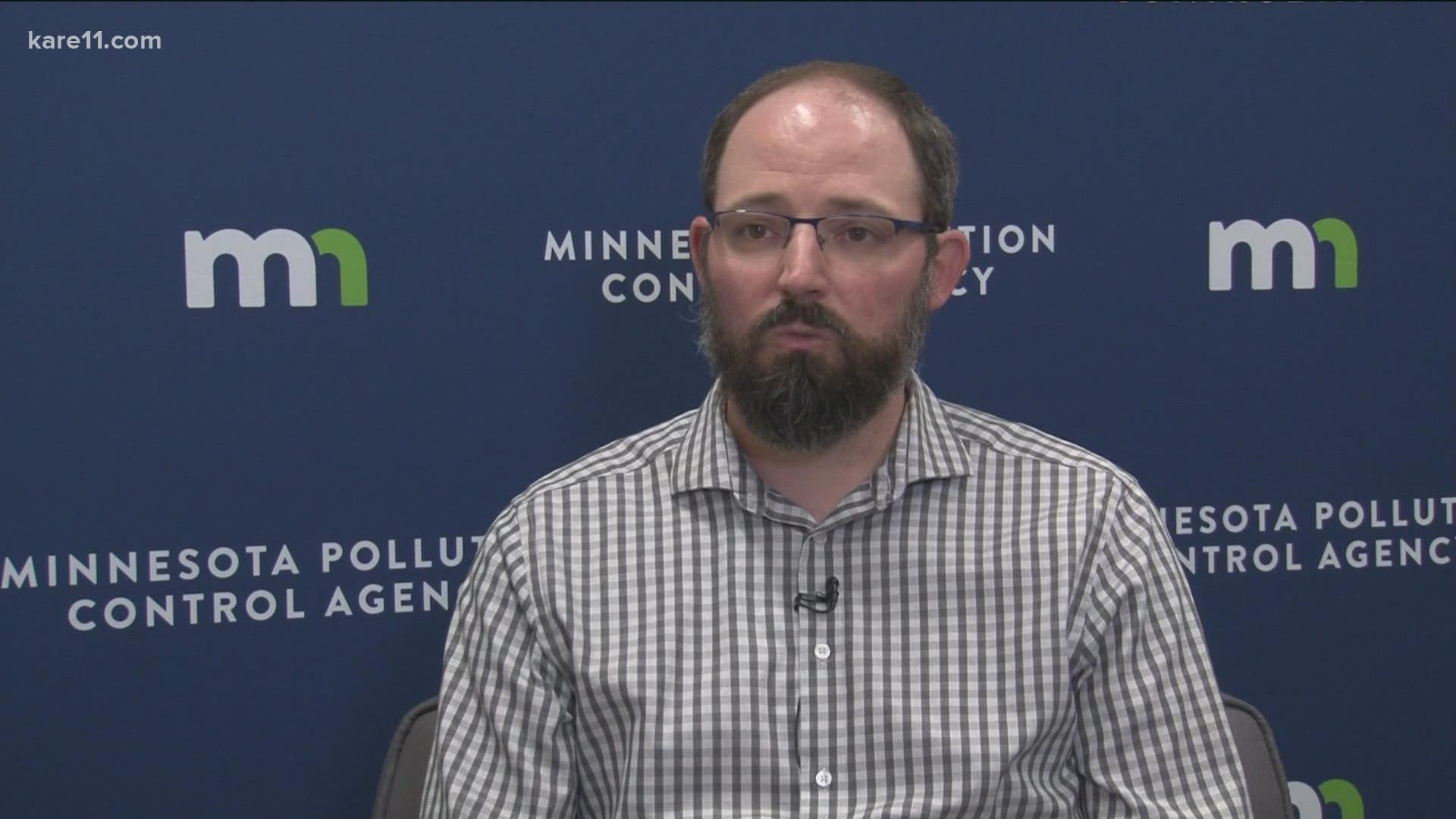ST PAUL, Minn. — We now have a better idea of how state agencies will put the 3M settlement money to use, making drinking water safer in the Twin Cities eastern metro.
The Minnesota Pollution Control Agency and Dept. of Natural Resources Wednesday unveiled a $700 million comprehensive plan to remove excessive levels of PFAS chemicals from the drinking water in 14 communities.
The blueprint includes building and expanding six new water treatment plants, adding treatment systems to 33 municipal wells, connecting nearly 300 homes to city water systems, and adding home filtration systems to some houses that currently rely on well water.
"Where the water comes into the house, we'll put a filter system there, a treatment system to take out the PFAS, so no matter where you are in the house you have safe drinking water," Assistant MPCA Commissioner Kirk Koudelka explained.
"We'll be doing larger treatment systems for municipalities where we'll connect to their wells before it goes out to the larger populations."
The plan contains detailed sets of remedies for each community, including Woodbury, Cottage Grove, Maplewood, Oakdale, Lake Elmo, Saint Paul Park, Newport, Afton, Grey Cloud Island Township, Denmark Township, Lakeland, Lakeland Shores, and West Lakeland Township.
Read more about the plan here and access interactive maps: MPCA East Metro Drinking Water Plan.
Decisions about which types of projects to pursue were based on building a treatment infrastructure that would be resilient enough to handle changes as the chemicals move through the ground water, and as science learns more about what levels are considered hazardous.
"This plan provides flexibility for communities to allow for population growth. It also allows for the incorporation of new information on the risks of PFAS," Peter Tester, the MPCA's acting commissioner, told reporters.
Tester and Jess Richards, the DNR assistant commissioner, both thanked the city officials and citizens who helped shape the plan in dozens of working group meetings and hearings over the past three years.
"The plan is the culmination of years of hard work and careful analysis," Tester remarked. "East metro communities and work group members provided countless hours of work and valuable input that was instrumental in getting us to this final result."
PFAS is short for Per- and polyfluoroalkyl substances, a group of man-made chemicals produced around the world and used in a variety of products including water-proofing and stain-blocking products and coatings. They're often described as "forever chemicals" because they persist in the environment without breaking down.
The groundwater contamination in the East Metro has been traced to four historic sites used by 3M for decades to dump excess chemicals, long before the potential hazards of those products became known.
The chemicals have found their way into the wells used by cities and townships, as well as private wells through the 14 communities covered by this plan. The agencies have continued to drill test wells throughout the area, to track the movement of the chemicals through rock substrata and aquifers.
"The goal is to be able to remove the PFAS from the system or manage it so it doesn’t move to other areas so we’re protecting," Koudelka told KARE.
"PFAS is what’s called an emerging contaminate, which means we’re learning more, so the Department of Health and others are doing more research on what are the potential impacts to human health."
The State of Minnesota brought a natural resources lawsuit against 3M, resulting in a $850 million settlement with the company.
Wednesday 3M issued this statement about the new plan:
"In early 2018, 3M placed $850M into the 3M Grant for Water Quality and Sustainability Fund to enable the State of Minnesota to implement projects that are reasonable and necessary to execute three agreed upon priorities. The first and highest priority is to enhance the quality, quantity, and sustainability of the drinking water in the East Metropolitan Area."
Here's a link to the 3M Grant for Water Quality and Sustainability Fund.

